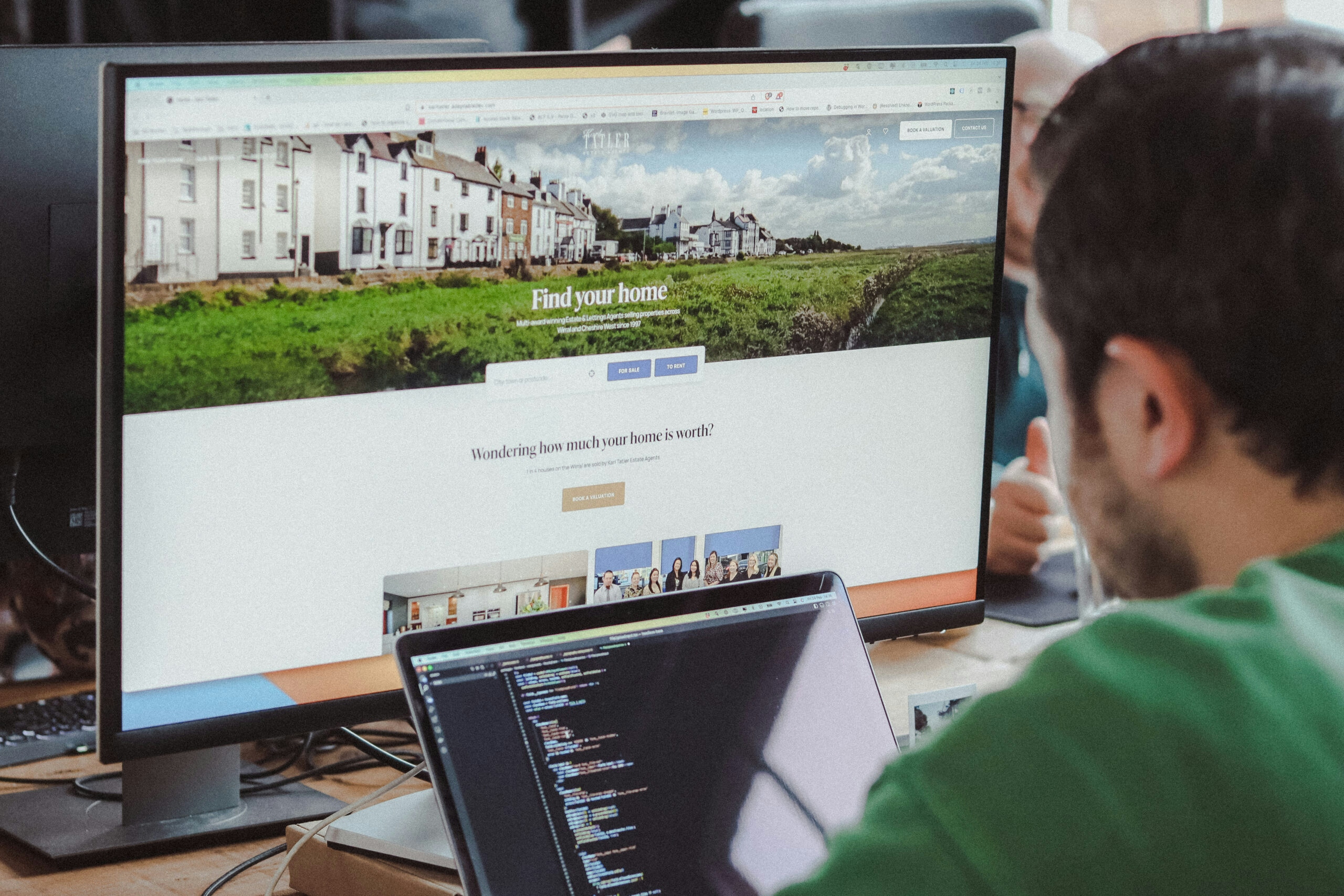4 digital trends to look out for in housebuilding

Outside of the services sector, construction is one of the biggest industries in the UK – with around 914,000 businesses operating in the sector at the end of 2023. New homebuilders of all sizes – from the biggest nationals to the smaller regionals – have got their work cut out to stand out in a crowded industry.
Obviously, the decision to buy a house and from which builder is a multi-faceted decision – from the location of developments to cost – but first impressions count. And for this generation of homebuyers, you’ll never make a stronger first impression than with your digital experiences.
We’ve just completed a report in which we analysed the websites and digital experiences of the top 40 housebuilders in the UK to see if and how they were using the tools available to them to engage their users and move them through the funnel to enquiring about a property or development.
Based on our findings in that report and our experience in the sector, in this blog post we’ll get into 4 digital trends to look out for in housebuilding, in 2024 and beyond.
But first, let’s set the scene a little more.
The importance of digital in selling off-plan
With the current state of the housing market and lingering high interest rates, selling off-plan is an increasingly attractive prospect for developers in forecasting cash flow and offering certainty. For buyers, they benefit from increased customisation and in some cases incentives. Although interest in off-plan sales in general cooled in the last few years or so, according to Hamptons, more owner-occupiers are buying off-plan than they have previously, where investors made up the biggest share of off-plan purchasing and have dropped off to 21% from 70% in 2015.
Digital experiences around developments and properties are important pieces of the puzzle when it comes to selling off-plan. To kind of state the obvious, selling off-plan is all about getting the customer to buy into the vision for the development and helping them to imagine and envisage the final product. Digital tools can be a massive help in achieving this. In addition, buying off-plan requires the customer to put a lot of trust in you as a developer. Again, digital is an incredibly powerful tool for building trust – a good user experience creates a positive experience of your brand overall.
So, with all that in mind, what are the up and coming digital tools and trends that housebuilders will be looking to use to raise awareness, increase engagement and sell more off plan in 2024 and beyond?
Customer portals
Our research found that just 35% of the UK’s biggest house builders by revenue had a dedicated customer portal (or at least were advertising on their website that they offered one). Offering a customer portal which directly integrates with your website and back-end systems (CRM, construction management software, etc) not only provides more transparency and better experience for the buyer, but can also help streamline processes too. Portals like Taylor Wimpey’s Touchpoint enable you to monitor build progress, configure personalisation options for a new home, contact customer service, log and track post-completion issues and upload and access key documents. Being able to offer this functionality not only frees up sales and customer service teams but also massively improves the experience for the user who has more control and visibility over the process. We’d expect to see more and more housebuilders on national and regional scale investing in launching dedicated customer portals over the next few years.
AI-driven livechat
There is a myriad of stats around how effective and efficient having live chat as a communication channel on your website is in driving sales and improving customer experience. Around 73% of consumers aged 18-49 say live chat is the most convenient way to communicate with businesses. 60% of consumers are more likely to return to a website that offers live chat. And it’s not just beneficial for the customer, it can improve internal efficiencies too, especially if you offer live chat powered by AI. AI-driven live chat enables you to answer simple queries or guide users through a pre-defined funnel without having to dedicate resources to it. Most live chat tools enable you to route users towards having a human answer their queries if they choose to, so you can use these to answer more complex queries and improve service levels. Other options for offering an easy enquiry/query contact option on your site includes things like integration with WhatsApp – the additional advantage here being that it leverages an app many people are already using, making the experience a bit more streamlined for them. Again, our research found that just 23% of the UK’s top housebuilders were utilising live chat or any sort of automated contact option on their site.
4D tours and virtual reality
When you’re selling off-plan, it’s all about using what tools you have available to bring a property or development to life. Our research found that just 25% of top housebuilders were using 4D virtual tours on their sites to enable users to guide themselves through a showhome or example property. Although they require a significant undertaking to create, they’re worth investing in as they are an invaluable resource in presenting an immersive experience to a potential buyer when selling off-plan or without them having to commit to booking and attending a viewing when selling a completed property.
Some developers go further than 4D virtual tours hosted on their websites. In 2023, our client Spitfire Homes became the first ever housebuilder to offer a virtual property tour in the metaverse – users could put on a VR headset, tour a property and even get details from a virtual sales advisor. As of 2023, there are approximately 171 million VR users worldwide – so perhaps we’ll see more and more housebuilders adopting this technology over the next few years as it becomes more affordable and accessible to the masses.
Headless
A headless website or headless CMS is a way of setting up a website that separates or decouples the front-end (what a user sees when they visit your website) from the backend content management (e.g. what you see when you’re adding or editing content via a platform like WordPress). This separation offers a host of benefits, two of the main ones being improved performance and scalability. As housebuilders look to host more immersive content on their websites and expand out their digital ecosystems with products and apps, utilising headless architecture will be vital in ensuring a consistent and smooth user experience. Only 7.5% of the top housebuilders in our report had headless websites, a real missed opportunity in terms of the performance and flexibility it would offer them. Headless also brings additional major security benefits too.
Summing up
Used in the right way, housebuilders of any size – national or regional – can take advantage of the latest tools and technologies to better engage users and sell more off-plan.
Trends to look out for include:
- Dedicated customer portals which offer a full process tracking and customer service experience
- AI-driven live chat and communication solutions, powered by familiar tools such as WhatsApp and Messenger
- 4D tours and virtual reality to provide immersive experiences around properties
- Headless websites to improve performance and scalability across a housebuilder’s digital ecosystem
And if you’ve been inspired by some of the technologies we’ve talked about in this post and you’re looking to get more advice on how you could incorporate them into your digital strategy – get in touch.




